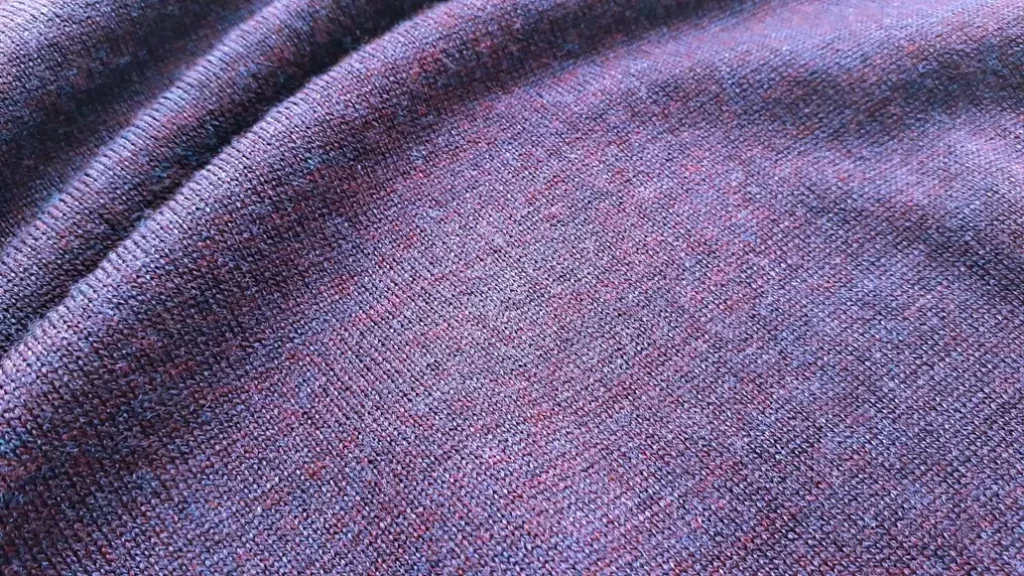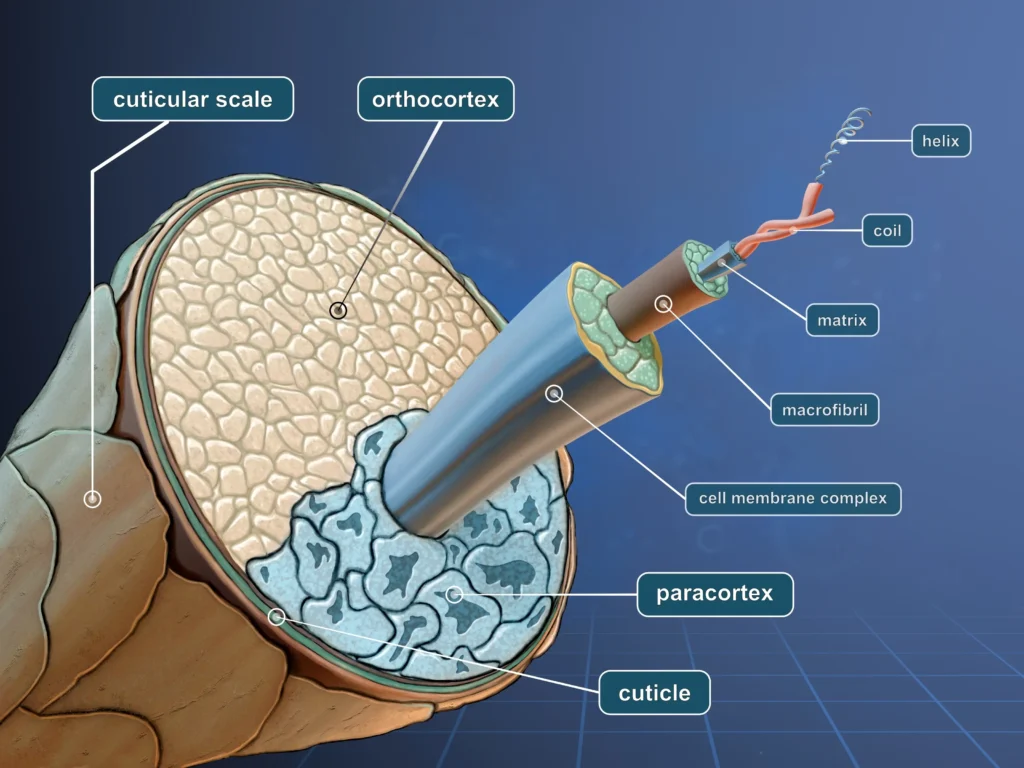Beginner's Guide to Fabrics for Backpacking Clothes

Table of Contents
Fabrics and Their Uses for Backpacking Clothes
| Fabric | Appropriate Uses |
|---|---|
| Polyester | Base layers Mid layers (fleece, etc.) Shirts Rain gear Gloves Hats Insulation fill in jackets |
| Nylon | Rain gear Windbreakers, wind shirts Pants and shorts Shirts |
| Polypropylene | Base layers Sock liners Glove liners Hat liners |
| Spandex | Base Layers (usually blended with polyester or merino wool) Pants and shorts (usually blended with nylon) Shirts (usually blended with polyester) |
| Wool | Base layers Mid layers Socks Hats |
| Silk | Base layers Sock liners Glove liners Sleeping bag liners |
| Bamboo | Base layers Socks Neck gaiters Hats |
| Cotton | Not suitable for backpacking clothes |
| Hemp | Not suitable for backpacking clothes |
Fabric Properties
When choosing fabrics for clothes, some important properties to consider are:
- Warmth (dry and wet)
- Water resistance
- Moisture wicking
- Breathability
- Drying time
- Abrasion resistance
- Strength-to-weight ratio
- Odor resistance
Moisture Management (Wicking and Drying)
Moisture wicking in fabrics is driven by capillary action, the same principle that causes water to rise through a narrow straw when its tip touches the water’s surface. In fabrics, water moves through tiny gaps between the fabric’s fibers, travelling from areas of higher humidity to areas of lower humidity. When you sweat, the higher humidity on the inside of your clothes drives moisture outward. However, if the fabric’s outer surface becomes wet from rain or high humidity, the direction of moisture movement can reverse.
Hydrophobic (water-repelling) fibers allow moisture on the fabric’s outer surface to evaporate quickly. Evaporation is an endothermic process—it absorbs heat away from your body, keeping it cool while you exercise and sweat. When you’re at rest in cold weather, the fabric keeps you warm since it stays dry.
Hydrophilic (water-attracting) fibers hold onto moisture, keeping the fabric wet. In cold weather, wet fabric conducts heat away from your body, making it cold.
Moisture Management of Synthetic Fabrics
Moisture-wicking synthetic fabrics have spaces between their fibers that promote capillary action. Sweat is pulled away from the skin and transported through the spaces to the fabric’s outer surface. Because synthetic fibers are hydrophobic, this moisture evaporates quickly.
Some manufacturers modify the structure of synthetic fibers to enhance their moisture-wicking capabilities. For example, Coolmax polyester fibers have non-round cross-sections that increase surface area to enhance capillary action.
Moisture Management of Cotton
Cotton is hydrophilic—it absorbs and retains moisture. When cotton absorbs sweat, its fibers swell and close the gaps between them, further preventing the transport of moisture. The water remains trapped in the fabric and against your skin, preventing evaporation. In cold weather, the wet fabric conducts heat away from your body, making you cold.
Moisture Management of Wool
A common misconception is that wool doesn’t absorb water. In fact, wool can absorb up to 35% of its weight in water, compared to 24% for cotton. So why is wool considered better than cotton for moisture management?
Wool fibers have a dual-layer structure:
- An inner hydrophilic core that bonds chemically with water vapor.
- An outer layer of overlapping scales, like roof roof shingles, with microscopic gaps between them. These scales are coated with hydrophobic lanolin.

with hydrophobic shingle-like scales on its outer surface
Unlike cotton fibers, wool fibers don’t swell when wet. Instead, they flex, widening the gaps between them and promoting capillary action.
Liquid water is wicked away from the skin to the outer surface. Since the fibers’ outer layers are hydrophobic, the liquid evaporates, cooling the body during exertion or in warm weather.
Water vapor, however, enters the gaps between the shingle-like scales of the fibers and bonds chemically to their inner cores. The bonding reaction is exothermic—it slowly releases heat, making wet wool feel warm in cold conditions.
Summary:
- Wool absorbs water vapor but allows liquid water to evaporate
- Wool absorbs a lot of moisture before feeling wet
- Wet wool cools the body in warm conditions
- Wet wool warms the body in cold conditions
Breathability
Breathable fabrics allow air and moisture vapor to pass through gaps between their fibers. Most moisture-wicking fabrics are breathable, but not all breathable fabrics are moisture-wicking. For example, cotton is breathable but not moisture-wicking.
Differences between Breathable and Moisture-wicking Fabrics
| Breathable | Moisture-wicking | |
|---|---|---|
| Primary purpose | Stay cool | Stay dry |
| Mechanism | Allows air and moisture vapor to pass through pores in the fabric | Uses capillary action to pull liquid moisture from the skin to the outside of the fabric |
Odor Resistance
Synthetic fabrics retain body odor, whereas wool does not. Wool’s odor resistance is often attributed to antimicrobial properties, but this is a myth. In fact, odor-causing bacteria survive longer on wool than on polyester. The mechanism behind wool’s odor resistance remains unclear.
Waterproofing
Properties of Various Fabrics
The table below is only a rough guideline, and there are exceptions. Comparing properties across all fabrics in all conditions is not straightforward, as fabric performance depends on multiple factors, including:
- Fiber weight (denier)
- Fiber morphology (especially for engineered synthetic fibers)
- Weave density
| Fabric | Water Resistance | Breathability | Moisture Wicking | Drying Time | Dry warmth | Wet warmth | Strength-to-Weight Ratio | Abrasion Resistance | Odor Resistance |
|---|---|---|---|---|---|---|---|---|---|
| Polyester | Excellent | Fair (depends on weave) | Excellent | Excellent | Very good | Good | Very good | Very good | Very poor |
| Nylon | Very good | Fair | Good | Very good | Somewhat poor | Fair | Excellent | Excellent | Very poor |
| Polypropylene | Excellent | Fair (depends on weave) | Excellent | Best | Fair | Very good | Excellent | Good | Fair |
| Spandex* | Fair | Poor | Poor | Fair | Very poor | Poor | Poor | Fair | Very poor |
| Wool | Absorbs water vapor but insulates | Excellent | Excellent | Somewhat poor | Excellent | Excellent | Poor | Fair | Excellent |
| Cotton | Extremely poor | Good when dry, poor when wet | Very poor | Worst | Poor | Very poor | Poor | Fair | Poor |
| Hemp | Very poor | Good when dry, poor when wet | Poor | Very poor | Good | Poor | Good | Fair | Very good |
| Silk | Poor | Good | Poor | Poor | Good | Somewhat poor | Good | Poor | Good |
| Bamboo | Very poor | Good | Fair | Poor | Good | Poor | Very poor | Poor | Somewhat good |
Related Topics
References
Hsieh, You-Lo. Liquid Transport in Fabric Structures. Textile Research Journal. Vol 65(5): 299-307.
Rohrig, Brian. Don’t Sweat It: How Moisture-Wicking Fabrics Keep You Cool and Dry. October 7, 2022. In Chemistry
Naylor, Geoff. The wool fibre and its applications. CSIRO Textile and Fibre Technology.
Basuk, Shantnu, et al. Development of Double Hydrophilic/Hydrophobic Surfaces of Wool Fabric. Indian Institute of Technology Delhi.
The Science of Wool. Weatherwool.
Storelli, Claudio. Breathable Fabrics vs Moisture-Wicking Fabrics: What’s the Difference? July 25, 2021. Neat.
Know About Textile Fibres. Coats.
Betkowski, Bev. New research offers fresh insights on why some clothes get smellier. July 8, 2024. Folio, University of Alabama.
Mukhtar abdul-Bari, M, et al. Retention and release of odorants in cotton and polyester fabrics following multiple soil/wash procedures. Textile Research Journal.Vol. 90, Issue 19-20.
Withey, Elizabeth. Passing the smell test. March 16, 2016. Folio, University of Alberta.
